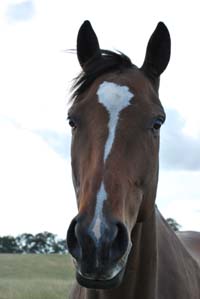Making My Grandchildren Rich – With a Stretch IRA
I had an opportunity this year to convert my very old and very small traditional IRA to a Roth. I will be in a lower tax bracket for several years so I bit the bullet and paid the taxes on the IRA.
I wanted the Roth because I want to leave the IRA to my grandchildren. My parents left my own children an inheritance and I would like to do the same for my grandchildren. But, by the time those kids could use the money in that pre-tax IRA, the tax bill would have been astronomical.
Now I just need to get the Roth set up so that the grandchildren will be able (and trained!!) to use it to it’s maximum advantage. Then my job will be to keep up with tax law changes, as our Uncle in DC just loves to fiddle with the tax code.
The Concept Is to S-T-R-E-T-C-H Out the Tax Free Investments and Earnings.
Roth IRA’s currently require no minimum distribution from you. Currently you can keep contributing to a Roth IRA (as long as you have earned income) – no matter your age. And of course, currently, there are absolutely no (zip, zero) taxes on a Roth that has been a Roth long enough (5 years after conversion or contribution). There are no taxes on the contributions (you already paid them) and no taxes on the earnings either.
The First Key To Success Is to Have the Correct Beneficiaries Set Up on the IRA
The ideal beneficiary has the longest life expectancy. However, you probably want your spouse to be able to use the money if needed and you should allow some flexibility so an after death assessment of tax laws can be made.
The IRA distribution rules govern how the money is a Roth is distributed. Some beneficiaries can hold the entire IRA for the rest of their lives if they want. Some beneficiaries must start taking distributions when they inherit the IRA or within 5 years of inheriting it.
Your spouse can roll your IRA into one of his own, naming his own beneficiaries. He has no acceleration of distributions and no required distributions. He can use whatever money he needs, then do a stretch of his own!
Non-Spouse beneficiaries have to take distributions. They can (and should) wait 5 years after the original owners death – to make sure the distributions are not taxable. They then take distributions over their own life expectancy.
James Lange recommends having your spouse as primary, then a trust (note – this is not your estate it is a specific trust agreement) as secondary and finally a child or grandchildren as third in line. You convince your spouse that he should decline the asset (assuming he doesn’t need the money) – so it passes to the trust. Your trustee can then also make the decision as to whether or not to accept the asset. This allows the trustee to check in with their tax advisor to decide what to do. If the trust won’t accept it, then the IRA will go to the children/grandchildren.
What this means is that mine is currently all out of whack. I have the father of the grandchildren as primary and my spouse as secondary!
The Second Key To Success Is to Make Sure Your Survivors Understand Your Intent for the IRA
If you leave this money to your grand kids and want them to stretch out the benefits of the non-taxable money, you need to talk to them and sell them on the benefits. If the child is a minor, you need to do the same with their guardian. You might also need to check out the impact of using a trust.
Here Are a Few Resources
There are a couple of good authors on the subject of using IRA’s to build an inheritance for your family. James Lange has two books: Retire Secure!: Pay Taxes Later – The Key to Making Your Money Last, 2nd Edition and The Roth Revolution: Pay Taxes Once and Never Again
. His website is http://www.rothira-advisor.com/mrd_defenses.php
Ed Slott has multiple books but this one is most interesting to me: Parlay Your IRA into a Family Fortune but beware tax law changes as this first came out in 2005.




